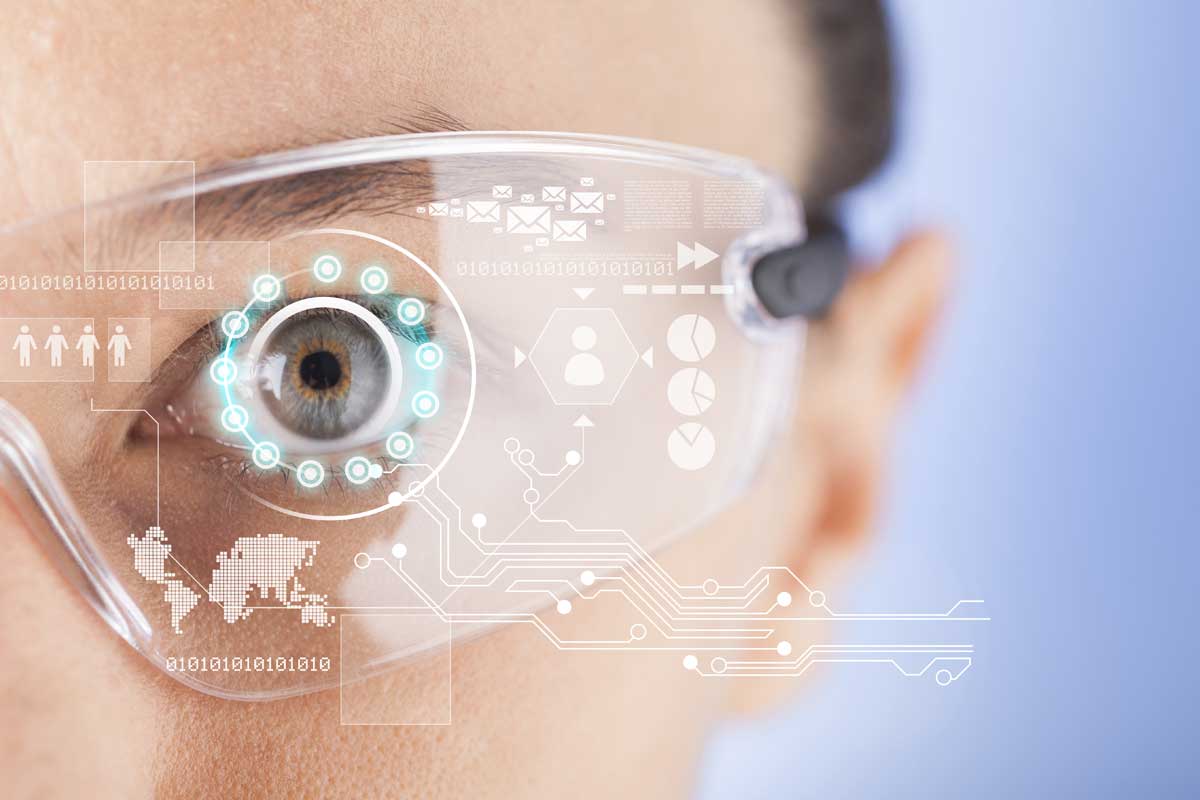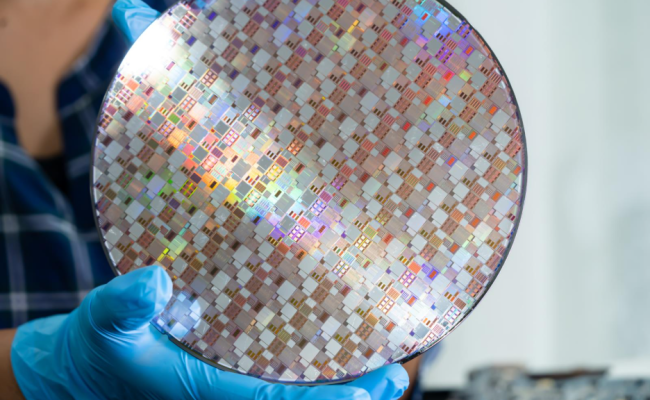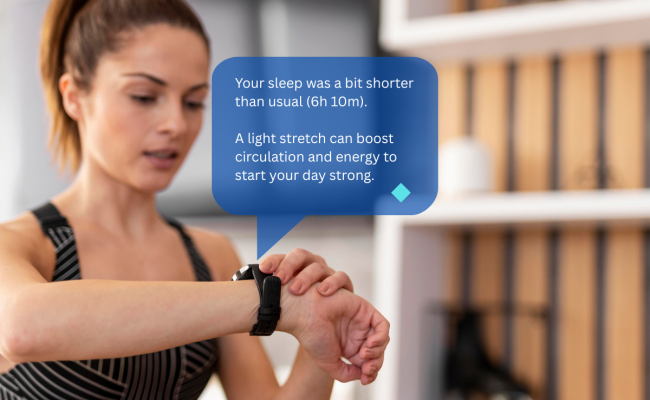
Smart glasses have long promised to disrupt the consumer market. Despite the initial hype, innovations remained limited to enterprise use as opposed to consumer everyday wear. When consumer devices started coming out, they were often very bulky for everyday wear and prolonged use. They also ran out of batteries quickly or needed to be connected to a charger, making them impractical.
Yet, as we move into an age of enabling AI into our daily lives, smart glasses have advanced leaps and bounds thanks to microcontrollers enabling more on the device. This was evident at CES 2025, with many AI-powered smart glasses promising to balance comfort and functionality. These AI glasses will only become more accessible to consumers in the coming year.
The Global Smart Glasses Market Is Poised for Continued Growth
The global smart glasses market size was estimated at USD 1.93 billion in 2024 and is expected to grow at a CAGR of 27.3% in the next five years.1 Growth has largely been driven by enterprise adoption and rising consumer interest.
Still, governments also recognize the opportunity to bring smart glasses to different sectors, such as the case of using AR to treat mental health or to use smart glasses in manufacturing and education. The result has been a rise in new funding and initiatives to boost research, development, and adoption. The advent of AI-powered smart glasses will further contribute to this growth and market.
The Evolution of Smart Glasses
The concept of smart glasses is far from new. This technology has a long history of innovations marked by developments in augmented reality (AR). Here’s an overview of the major players that have shaped the market:
- Google Glass (2013): Pioneered the concept of smart glasses with voice commands, photography, and internet connectivity but faced privacy and price backlash.
- Microsoft HoloLens (2016): Introduced the idea of hologram interactions within the physical environment and showed the potential of AR for enterprise use.
- Ray-Ban Meta (2021): Drove initial mainstream usage of smart glasses, empowering consumers with hands-free access to digital lives from their physical ones, including a smart AI assistant and phone communication.
- Apple Vision Pro (2023): Demonstrated the potential of spatial computing in smart glasses but has limited accessibility due to a high price tag and limited battery life.
- Meta Orion (Future): Promises to go beyond basic overlays to seamlessly blend virtual content with the real world with holographic displays and neural interfaces.
But among these giants, smaller startup companies are contributing to this evolution, each with its own unique features that incorporate the best elements from their predecessors.
The Year of AI-Powered Smart Glasses
CES featured a number of smaller companies that have thrown their hats into the ring, developing feature-rich smart glasses with distinct capabilities, including smart glasses with enhanced audio capabilities. These are some of the emerging AI smart glasses to keep an eye on in 2025:
Rokid AR Spatial
Offering a competitive alternative to the Apple Vision Pro, the Rokid AR Spatial2are the first smart AR glasses to feature intelligent myopia and pupillary adjustment so that those with nearsighted vision can enjoy the experience without using additional prescription lenses.
They project a display that goes up to 300 inches using OLED technology from Sony and can connect to your preferred smartphone or devices such as your laptop, cellphone, or gaming systems.
Even Realities G1
On the surface, the Even Realities G1 provides a stylish and discreet look; however, behind these specs include advanced lens technology that runs on the Holistic Adaptive Optical System (HAOS™) to deliver digital content without loss of clarity3. Perplexity powers integrated AI features as an assistant to answer questions using large language models (LLMs). The Even Realities G1 also boasts an impressive 1.5 battery life for typical use, marking a significant improvement for similar technology.
Halliday
The AI glasses that emerged from CES 2025, Halliday took the event by storm, featuring a conventional look with advanced technology they describe as “proactive AI.” This is an AI agent that uses active listening to learn from the surroundings and provide responses in real time4.
The Halliday small glasses use a micro display module to project an invisible DigiWindow instead of projecting on the lenses. By design, this reduces light leakage or rainbow effects. It supports on-screen displays of textual information, such as translations, notifications, and incoming messages. The Halliday lens positions itself comfortably with a lightweight design that moves away from the clunky aesthetics of other smart glasses.

How AI Is Changing the Smart Glasses Game
As seen from the devices above, AI has become a critical component of smart glass innovation, offering a range of benefits, including
- More sophisticated user interactions: Voice control and computer vision empower users to interact with wearables more seamlessly.
- Integrations of LLMs: OpenAI’s large language models enable natural conversions and expansive content generation to inform, engage, and entertain.
- Deeper personalization: Tailored content and experiences will resonate better with users.
- Real-time information processing: Immediate data processing introduces new functionalities and uses case opportunities.
AI Chips Make Smart Glasses More Mainstream
One of the other ways AI profoundly impacts smart glasses is through design enhancements. Smart glass innovators have more design flexibility thanks to more efficient data processing and improved performance through AI chips.
The emerging smart glasses seen at CES scale down their hardware size, featuring lightweight designs that are comfortable for extended periods of time and Improved battery life for long-term use of smart glasses. The added benefit is these glasses are starting to look stylish for everyday wear.
AI Glasses Applications to Watch
The potential for AI glasses is endless, but here are some of the exciting things consumers can do today:
- Language translation: Engage in hands-free content consumption and conversations with real-time translation across messages, social media, internet browsing, etc.
- Navigation: Get detailed directions, safety information, and informative overlays to improve the experience.
- Productivity: Optimize your organization with a virtual assistant and hands-free access to your calendar, notifications, and reminders.
- Photography: Take and share multimedia with better quality and automatic enhancements.
A Look at the Future of AI Glasses
The growth of edge devices and greater investment in AI and AR will continue to drive innovation in this market and support consumer interest in this product. While significant advancements have been made in design and processing power, there is still a long road ahead to optimize the comfort and functionality of these devices for everyday use.
One of the biggest challenges that AI glasses pioneers will face is broad social acceptance of these new devices (not uncommon with any technological advances) and showcasing value for the price. To pave the way for mainstream adoption, privacy concerns and technological limitations must be addressed head-on.
How Ambiq is Contributing
As AI becomes a sought-after feature for edge devices such as smart glasses, designers will also need to consider their device’s design and practicality to win their customers’ hearts. AI smart glasses must have snappy performance that supports their innovative features, longer battery life for practical use, and sleek designs.
Ambiq is uniquely positioned to address these considerations with its range of ultra-low power system-on-chips (SoCs). In a recent partnership with ThinkAR for their AiLens smart glasses, Ambiq uses the Apollo4 SoC to enable stunning graphics, audio, and AI models using energy-efficient edge processing on device edge.
This provides ThinkAR with real-time and responsive AI integration, a 3X above industry standard battery life, and minimized hardware components for a lightweight design. To learn more about Ambiq and ThinkAR’s collaboration, view here.
Sources:
1Grand View Research | December 2024
2Discover Rokid AR Spatial – Your Gateway to Next-Generation Augmented Reality Experiences – Rokid | 2025
3Even Realities G1 Review | Prescription Smart Glasses with Display & AI | 2025
4Halliday: World’s 1st Proactive AI Glasses with Invisible Display – Hallidayglobal | 2025


